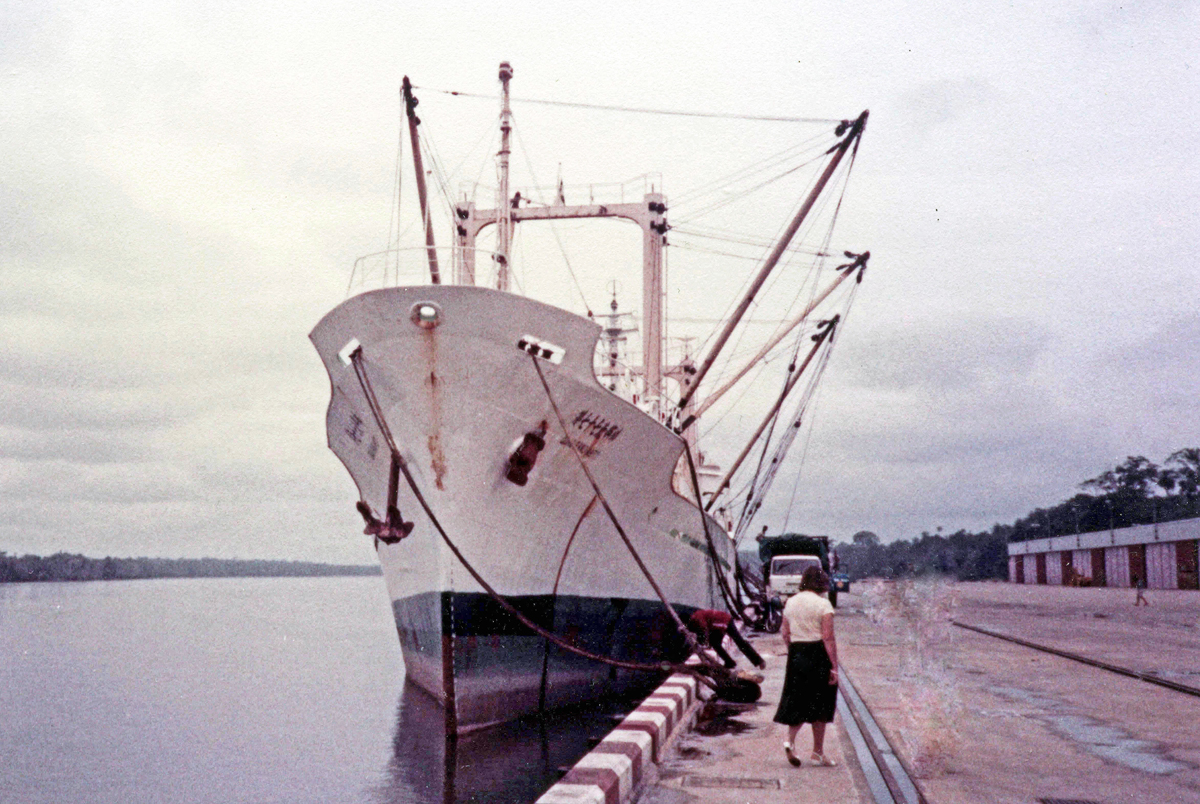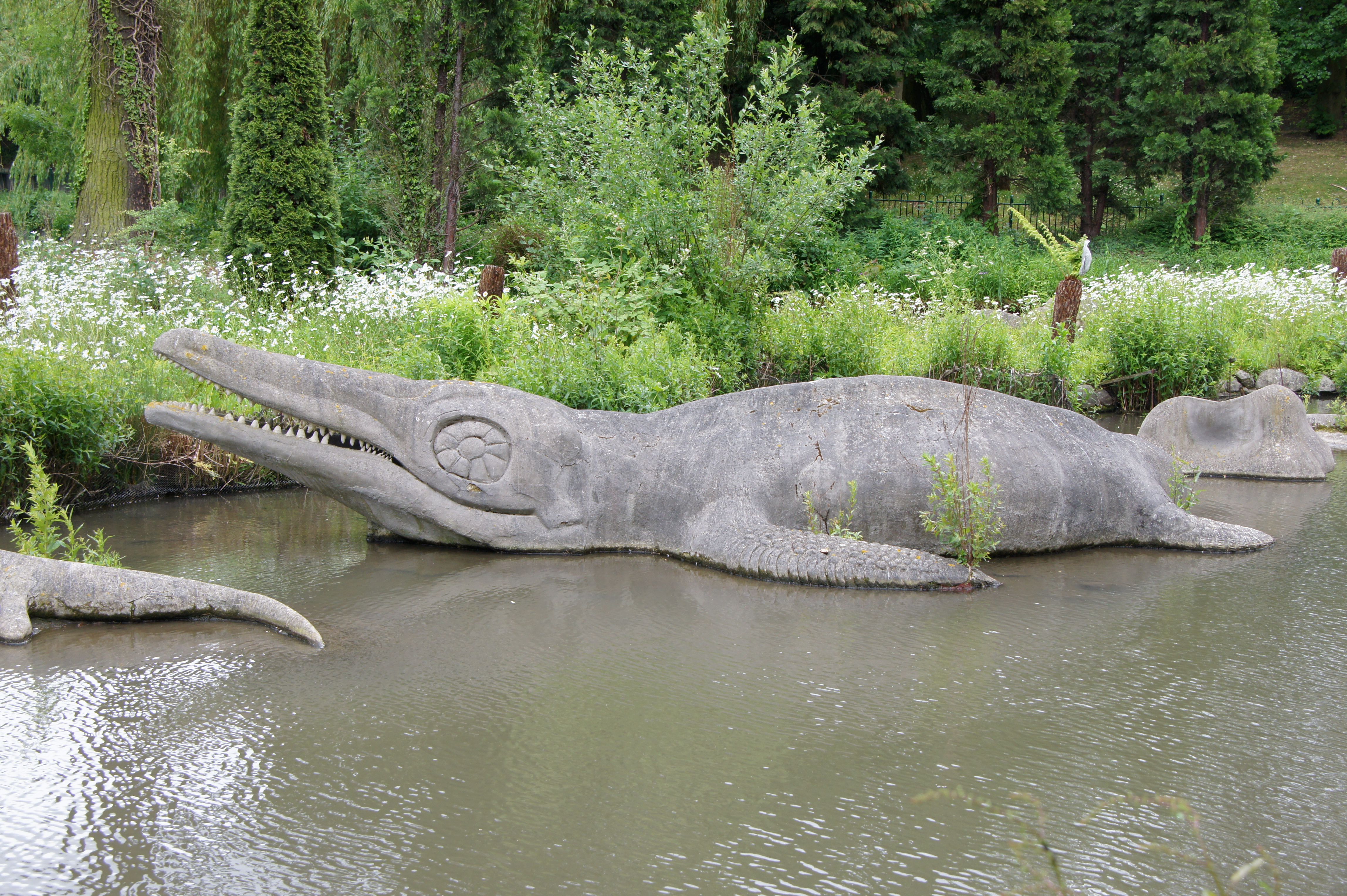|
Pluridens Walkeri
''Pluridens'' ("many teeth") is an extinct genus of marine lizard belonging to the Mosasauridae. ''Pluridens'' is placed in the subfamily Halisaurinae with the genera ''Phosphorosaurus'', ''Eonatator'' and ''Halisaurus''.Konishi, Takuya; Caldwell, Michael W.; Nishimura, Tomohiro; Sakurai, Kazuhiko; Tanoue, Kyo (2015). "A new halisaurine mosasaur (Squamata: Halisaurinae) from Japan: the first record in the western Pacific realm and the first documented insights into binocular vision in mosasaurs". Journal of Systematic Palaeontology: 1–31. doi:10.1080/14772019.2015.1113447. Compared to related halisaurines, ''Pluridens'' had longer jaws with more teeth, and smaller eyes. It also grew large size, measuring long and perhaps over in some individuals. The jaws in some specimens are robust, and sometimes show injuries suggestive of combat. The jaws may have been used for fighting over mates or territories. ''Pluridens'' lived in the shallow seas of West Africa during the late Ca ... [...More Info...] [...Related Items...] OR: [Wikipedia] [Google] [Baidu] |
Late Cretaceous
The Late Cretaceous (100.5–66 Ma) is the younger of two epochs into which the Cretaceous Period is divided in the geologic time scale. Rock strata from this epoch form the Upper Cretaceous Series. The Cretaceous is named after ''creta'', the Latin word for the white limestone known as chalk. The chalk of northern France and the white cliffs of south-eastern England date from the Cretaceous Period. Climate During the Late Cretaceous, the climate was warmer than present, although throughout the period a cooling trend is evident. The tropics became restricted to equatorial regions and northern latitudes experienced markedly more seasonal climatic conditions. Geography Due to plate tectonics, the Americas were gradually moving westward, causing the Atlantic Ocean to expand. The Western Interior Seaway divided North America into eastern and western halves; Appalachia and Laramidia. India maintained a northward course towards Asia. In the Southern Hemisphere, Australia and Ant ... [...More Info...] [...Related Items...] OR: [Wikipedia] [Google] [Baidu] |
Mosasaurinae
The Mosasaurinae are a subfamily of mosasaurs, a diverse group of Late Cretaceous marine squamates. Members of the subfamily are informally and collectively known as "mosasaurines" and their fossils have been recovered from every continent except for South America. The lineage first appears in the Turonian and thrived until the K-Pg mass extinction at the end of the Maastrichtian. They ranged in size from some of the smallest known mosasaurs (''Carinodens'', 3–3.5 meters), to medium-sized taxa (''Clidastes'', 6+ meters), to the largest of the mosasaurs (''Mosasaurus hoffmannii'') potentially reaching about 13 m in length. Many genera of mosasaurines were either piscivorous or generalists, preying on fish and other marine reptiles, but one lineage, the Globidensini, evolved specialized crushing teeth, adapting to a diet of ammonites and/or marine turtles. Though represented by relatively small forms throughout the Turonian and Santonian, such as ''Clidastes'', the lineage diver ... [...More Info...] [...Related Items...] OR: [Wikipedia] [Google] [Baidu] |
Mosasaurs Of Africa
Mosasaurs (from Latin ''Mosa'' meaning the 'Meuse', and Greek ' meaning 'lizard') comprise a group of extinct, large marine reptiles from the Late Cretaceous. Their first fossil remains were discovered in a limestone quarry at Maastricht on the Meuse in 1764. They belong to the order Squamata, which includes lizards and snakes. Mosasaurs probably evolved from an extinct group of aquatic lizards known as aigialosaurs in the Earliest Late Cretaceous with 42 described genera. During the last 20 million years of the Cretaceous period (Turonian–Maastrichtian ages), with the extinction of the ichthyosaurs and pliosaurs, mosasaurs became the dominant marine predators. They themselves became extinct as a result of the K-Pg event at the end of the Cretaceous period, about 66 million years ago. Description Mosasaurs breathed air, were powerful swimmers, and were well-adapted to living in the warm, shallow inland seas prevalent during the Late Cretaceous period. Mosasaurs were so we ... [...More Info...] [...Related Items...] OR: [Wikipedia] [Google] [Baidu] |
2016 In Paleontology
Flora Plants Fungi Cnidarians Research * '' Yunnanoascus haikouensis'', previously thought to be a member of Ctenophora, is reinterpreted as a crown-group medusozoan by Han ''et al.'' (2016). * A study on the fossil corals from the Late Triassic (Norian) outcrops in Antalya Province (Turkey), indicating that the corals lived in symbiosis with photosynthesizing dinoflagellate algae, is published by Frankowiak ''et al.'' (2016). New taxa Arthropods Bryozoans Brachiopods Molluscs Echinoderms Conodonts Fishes Amphibians Research * A study on the histology and growth histories of the humeri of the specimens of ''Acanthostega'' recovered from the mass-death deposit of Stensiö Bjerg (Greenland) is published by Sanchez ''et al.'' (2016), who argue that even the largest individuals from this deposit are juveniles. * Fossils of a tetrapod resembling '' Ichthyostega'' and a probable whatcheeriid-grade tetrapod are described from two Devonian (Famennian) localities fr ... [...More Info...] [...Related Items...] OR: [Wikipedia] [Google] [Baidu] |
Calabar
Calabar (also referred to as Callabar, Calabari, Calbari and Kalabar) is the capital city of Cross River State, Nigeria. It was originally named Akwa Akpa, in the Efik language. The city is adjacent to the Calabar and Great Kwa rivers and creeks of the Cross River (from its inland delta). Calabar is often described as the tourism capital of Nigeria, especially due to several initiatives implemented during the administration of Donald Duke as governor of Cross River State (1999–2007), which made the city the cleanest and most environmentally friendly city in Nigeria. Administratively, the city is divided into Calabar Municipal and Calabar South Local Government Areas. It has an area of and a population of 371,022 as at 2006 census. History Calabar was the name given by the Portuguese discoverers from the 15th century to the tribes on this part of the Guinea coast at the time of their arrival, when the present inhabitants in the district were the Quas. It was not till th ... [...More Info...] [...Related Items...] OR: [Wikipedia] [Google] [Baidu] |
Nkporo Formation
Nkporo (Okwe ancient kingdom ) is a town in Abia State, in southeastern Nigeria, traditionally an Igbo speaking region. And it is in the Ohafia Local Government Area. History Nkporo is said to be one of the oldest communities among clans that are referred to by Anthropologists and Sociologists as the Cross River Igbos. The movement of the main body of Nkporo people and the eventual opening and settling in their present-day location took almost three hundred and fifty years. Nkporo people came from a group of people who were mainly from a single sanguinary stock which lived together with some offspring of the same ancestor, who later evolved as the Efiks within the Nkanal Ikot or Okoro Nkon Ikpe zone of the present Ibibio or Efik land. The first settlement of the Nkporo people was called Ama Mpoto which means "mpoto square". The leader of the people was named Okwo Nkwoghoro who was popularly called "Okwe" in abbreviation. It was believed that before moving to Okpukpu-Iyi Ar ... [...More Info...] [...Related Items...] OR: [Wikipedia] [Google] [Baidu] |
Pluridens And Halisaurus By Nick Longrich
''Pluridens'' ("many teeth") is an extinct genus of marine lizard belonging to the Mosasauridae. ''Pluridens'' is placed in the subfamily Halisaurinae with the genera ''Phosphorosaurus'', ''Eonatator'' and ''Halisaurus''.Konishi, Takuya; Caldwell, Michael W.; Nishimura, Tomohiro; Sakurai, Kazuhiko; Tanoue, Kyo (2015). "A new halisaurine mosasaur (Squamata: Halisaurinae) from Japan: the first record in the western Pacific realm and the first documented insights into binocular vision in mosasaurs". Journal of Systematic Palaeontology: 1–31. doi:10.1080/14772019.2015.1113447. Compared to related halisaurines, ''Pluridens'' had longer jaws with more teeth, and smaller eyes. It also grew large size, measuring long and perhaps over in some individuals. The jaws in some specimens are robust, and sometimes show injuries suggestive of combat. The jaws may have been used for fighting over mates or territories. ''Pluridens'' lived in the shallow seas of West Africa during the late Ca ... [...More Info...] [...Related Items...] OR: [Wikipedia] [Google] [Baidu] |
1998 In Paleontology
Flora Lycophytes Lycophyte research *Wehr (1998) reports, without description, ''Selaginella'' species spikemoss fossils occurring in the Eocene Okanagan highlands Klondike Mountain Formation. Fungi Fungal research *Currah, Stockey, & LePage (1998) describe the a phyllachoralean " tar spot" parasitizing ''Uhlia'' palm leaves, and host for a hyperparasitic pleosporalean fungus. They note them to be one of the first occurrences of hyperparasitic relationships in the fossil record. Arthropods Insects Molluscs Bivalves Amphibians newly named anurans Archosauromorpha Dinosaurs * A paper in the journal ''Nature'' is published by Karen Chin and others announcing the earlier discovery of a "king-sized coprolite" attributed to ''Tyrannosaurus rex''. * ''Lourinhasaurus'' gastroliths documented.Dantas et al. (1998). Sanders, Manley, and Carpenter (2001), "Table 12.1" page 167. * ''Cedarosaurus'' gastroliths documented.Sanders and Carpenter (1998). Sanders, Manley, and Car ... [...More Info...] [...Related Items...] OR: [Wikipedia] [Google] [Baidu] |
Leptonectes
''Leptonectes'' is a genus of ichthyosaur that lived in the Late Triassic to Early Jurassic (Rhaetian - Pliensbachian). Fossils have been found in Belgium, Germany, Switzerland, Spain and the United Kingdom.Maisch MW, Matzke AT. 2000. The Ichthyosauria. ''Stuttgarter Beiträge zur Naturkunde, Serie B (Geologie und Paläontologie)'' 298: 1-159McGowan C, Motani R. 2003. Ichthyopterygia. – In: Sues, H.-D. (ed.): ''Handbook of Paleoherpetology, Part 8, Verlag Dr. Friedrich Pfeil'', 175 pp., 101 figs., 19 plts; MünchenMaisch MW, Reisdorf AG. 2006. Evidence for the longest stratigraphic range of a post-Triassic Ichthyosaur: a Leptonectes tenuirostris from the Pliensbachian (Lower Jurassic) of Switzerland. ''Geobios'' 39: 491-505. The type species, ''L. tenuirostris'', reached long, while ''L. moorei'' reached long; the largest species, ''L. solei'', was approximately long. See also * List of ichthyosaurs * Timeline of ichthyosaur research This timeline of ichthyosaur resear ... [...More Info...] [...Related Items...] OR: [Wikipedia] [Google] [Baidu] |
Temnodontosaurus
''Temnodontosaurus'' (Greek for "cutting-tooth lizard"temno, meaning "to cut", odont meaning "tooth" and sauros meaning "lizard") is an extinct genus of ichthyosaur from the Early Jurassic period. They lived between 200 and 175 million years ago ( Hettangian-Toarcian) in what is now Western Europe (England, France, Luxembourg, Germany and Belgium) and possibly Chile. It lived in the deeper areas of the open ocean.Motani R.(2000). “Rulers of the Jurassic seas”. Scientific American. 283 (6): 52-59 University of Bristol paleontologist Jeremy Martin described the genus ''Temnodontosaurus'' as "one of the most ecologically disparate genera of ichthyosaurs," although the number of valid ''Temnodontosaurus'' species has varied over the years. ''Temnodontosaurus'' was one of the largest ichthyosaurs, with the type species (''T. platyodon'') reaching up to in maximum body length. It is known for its incredibly large eyes which, at approximately in diameter, are believed to be the l ... [...More Info...] [...Related Items...] OR: [Wikipedia] [Google] [Baidu] |






